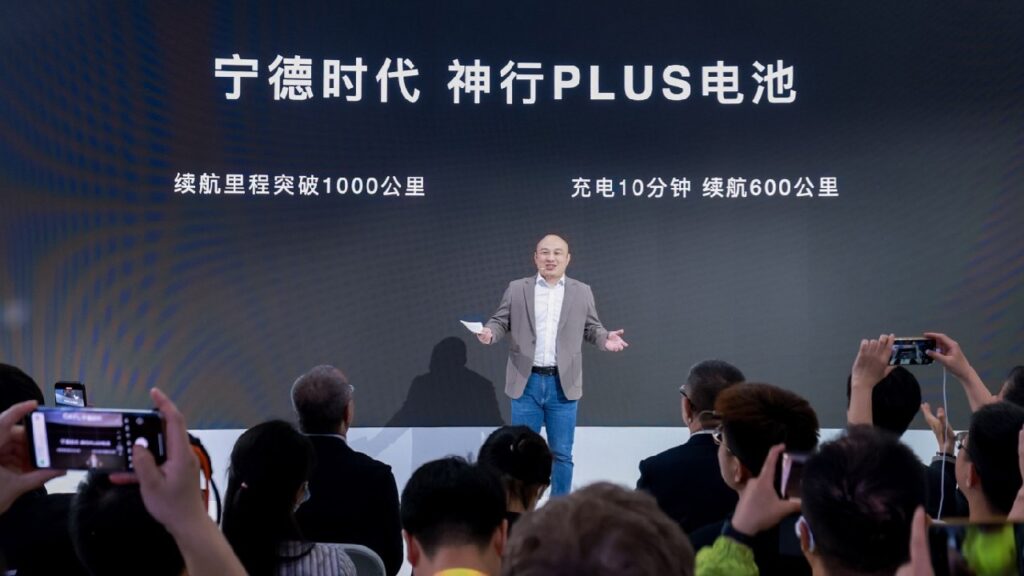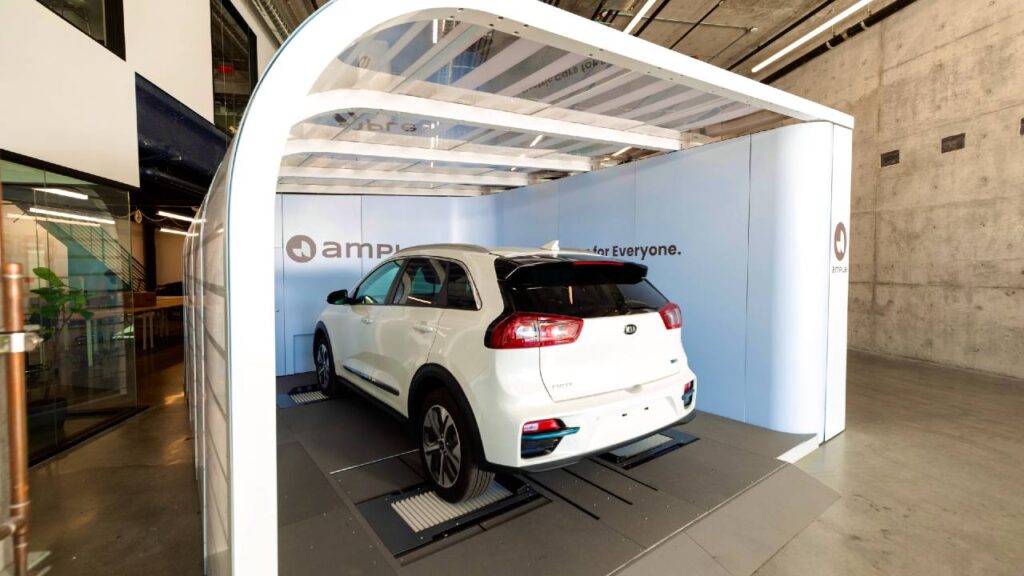CATL Unveils World’s First LFP Battery With a 1,000-km Range
At Auto China 2024, CATL unveiled the Shenxing PLUS battery which offers a range of 1,000 km (621 mi.) and 4C superfast charging capabilities. Chinese battery manufacturer and tech giant CATL has showcased its Shenxing PLUS LFP battery with an unprecedented 1,000 km (621 mi.) range. Contemporary Amperex Technology Co. Limited (CATL) is the largest EV battery company in the world. It is constantly innovating new tech to improve the range and charging rates of electric car batteries. Its Shenxing battery was launched last year with a charging time of just 10 minutes for 400 km (248 mi.). You might also like: New CATL Batteries To Retain 80% Capacity After 12 Years New CATL Shenxing PLUS LFP Battery w/ 1,000 km Range The Shenxing PLUS is the next-generation model of last year’s battery which is now capable of recovering 600 km (373 mi.) of range in just 10 minutes. This is the result of 4C superfast charging capability. The constant innovation at CATL regarding various aspects of an EV battery is commendable. As a result of this, the Chinese EV battery giant is pushing the boundaries of what Li-ion batteries can achieve on a daily basis. Remember, the figures we are discussing here are according to CLTC parameters. Continuous technological breakthroughs enable the Shenxing PLUS to achieve an impressive 1,000-km pure electric range. These breakthroughs are driven by innovations in both materials and design. Granular gradation technology crafts the cathode, meticulously arranging nanoparticles to achieve an ultra-high compact density. Complementing this, proprietary 3D honeycomb-shaped material integrates into the anode, enhancing energy density while effectively managing volume expansion during charging and discharging. Notably, the single-piece casing, a pioneering feat in the industry, optimizes internal space utilization, pushing Shenxing PLUS cells to an unprecedented level of energy density. At the system level, the Shenxing PLUS battery pack employs a topologically optimized structure built upon module-free CTP 3.0 technology, resulting in a 7% increase in packing efficiency. Through these material and structural breakthroughs, the energy density of the Shenxing battery system shatters the 200 Wh/kg barrier, achieving an impressive 205 Wh/kg. This groundbreaking achievement makes ranges exceeding 1,000 km a tangible reality You might also like: StoreDot and Polestar Achieve 10-Minute Charging w/ Si-Dominant Cells 4C Superfast Charging The 4C superfast charging allows the 600-km range to replenish in a mere 10 minutes. For this, Shenxing PLUS applies technologies including fast lithium-ion conductive coating, the addition of transition metal elements, and new nanometer encapsulation, rendering smoother and more efficient energy transmission between cathode and anode materials. CATL has expanded the overcurrent area and capacity of the terminals in the battery system to rapidly dissipate heat during high-current charging. In terms of BMS core algorithms, CATL’s newly developed AI polarization model can predict and control the charging current in real time, enabling faster and smarter energy replenishment. You might also like: Mazda and Panasonic To Work On Cylindrical Cells For EV Batteries Learn Electric Cars Says CATL already partners with some of the biggest car marques on the planet. These include BMW, Daimler AG, Hyundai, Honda, Li Auto, NIO, PSA, Tesla, Toyota, Volkswagen, Volvo and XPeng. It has been at the top in EV battery space for 7 consecutive years. Clearly, they are investing heavily in battery R&D. With incremental improvements in the already existing battery tech, the company continues to remain ahead of the curve. With so many large carmakers already using CATL batteries, the wide-scale impact of its new solutions can easily get translated into real cars rapidly. These are not one of those solutions which will take years to come to fruition. That is the best part about the new technologies from CATL. As a matter of fact, the Shenxing batteries developed last year are already in use in EVs at the moment. That is a positive sign going forward. We shall have to watch out for which new cars utilize this new LFP battery from CATL.


